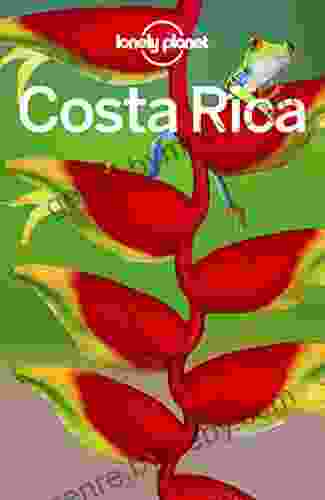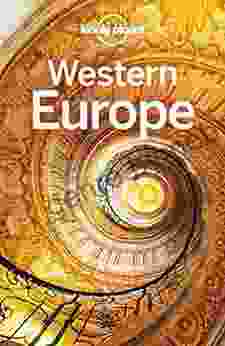Unveiling the Opulence of the Renaissance Silk Industry in Venice

4.2 out of 5
| Language | : | English |
| File size | : | 5546 KB |
| Text-to-Speech | : | Enabled |
| Screen Reader | : | Supported |
| Enhanced typesetting | : | Enabled |
| Print length | : | 603 pages |
Venice, the "Queen of the Adriatic," was not only a maritime and trading powerhouse but also a hub of artistic and cultural brilliance during the Renaissance. At the heart of this vibrant city's economic prowess lay the thriving silk industry, a testament to Venetian ingenuity, innovation, and an insatiable thirst for luxury.
The silk industry in Renaissance Venice was a complex and multifaceted tapestry, intricately woven with threads of artistry, commerce, and political power. This article delves into the captivating world of Venetian silk production, exploring its origins, technological advancements, diverse products, and profound impact on Venetian society and beyond.
Origins and Early Development
The art of silk production found its way to Venice from the East, brought by merchants who traded with the Byzantine Empire and the Islamic world. By the 12th century, Venice had established itself as a major center for silk weaving, producing exquisite fabrics that were highly prized throughout Europe.
Initially, silk production in Venice was primarily carried out by small-scale workshops scattered across the city. However, as demand for Venetian silk soared, a more organized and centralized approach emerged.
Technological Advancements
Venetian silk weavers were renowned for their technical prowess and innovative spirit. They developed specialized looms and techniques that enabled them to produce silk fabrics of exceptional quality and beauty. One of their most significant innovations was the "velours façonné" technique, which allowed for the creation of intricate patterns and designs in the woven fabric.
Venetian artisans also experimented with different types of silk yarns, including fine spun silk, twisted silk, and metal-wrapped silk. These variations in texture and sheen added depth and opulence to their creations.
Diverse Products and Exports
The Venetian silk industry produced a wide range of products, from sumptuous velvets and satins to delicate laces and ribbons. These fabrics were not only used for clothing but also for furnishings, tapestries, and other decorative purposes.
Venice's silk exports played a crucial role in the city's economic prosperity. Venetian merchants shipped their exquisite fabrics to markets throughout Europe, the Middle East, and even Asia. The demand for Venetian silk was so high that it became a major source of foreign exchange and a symbol of Venetian wealth and power.
Social and Cultural Impact
The silk industry had a profound impact on Venetian society. The wealth generated by the trade enriched the city's merchant class and fueled the growth of art and architecture. Silk became a symbol of status and luxury, worn by the Venetian elite to display their wealth and social standing.
The demand for skilled silk workers also led to the emergence of specialized guilds and workshops. These guilds played a crucial role in regulating the industry, maintaining quality standards, and providing training to apprentices.
Decline and Legacy
The Venetian silk industry reached its peak during the 16th century, but its fortunes declined in the following centuries due to competition from other European textile centers and the shift in global trade routes. By the 18th century, the industry had largely faded, although some remnants remained.
The legacy of the Venetian silk industry, however, lives on. The exquisite silk fabrics produced during this period continue to be admired and collected, showcasing the exceptional craftsmanship and artistic vision of Venetian artisans.
The silk industry in Renaissance Venice was a pivotal chapter in the city's rich history, a testament to Venetian ingenuity, commercial prowess, and artistic brilliance. Through their technological advancements, diverse products, and profound social and cultural impact, Venetian silk weavers left an enduring legacy that continues to inspire and fascinate to this day.
For those seeking a deeper understanding of this fascinating topic, we highly recommend the book The Silk Industry of Renaissance Venice. This comprehensive and beautifully illustrated volume explores every aspect of the Venetian silk trade, from its origins to its decline, providing a captivating account of one of the most significant industries in the history of textiles.
4.2 out of 5
| Language | : | English |
| File size | : | 5546 KB |
| Text-to-Speech | : | Enabled |
| Screen Reader | : | Supported |
| Enhanced typesetting | : | Enabled |
| Print length | : | 603 pages |
Do you want to contribute by writing guest posts on this blog?
Please contact us and send us a resume of previous articles that you have written.
 Book
Book Novel
Novel Page
Page Chapter
Chapter Text
Text Story
Story Genre
Genre Reader
Reader Library
Library Paperback
Paperback E-book
E-book Magazine
Magazine Newspaper
Newspaper Paragraph
Paragraph Sentence
Sentence Bookmark
Bookmark Shelf
Shelf Glossary
Glossary Bibliography
Bibliography Foreword
Foreword Preface
Preface Synopsis
Synopsis Annotation
Annotation Footnote
Footnote Manuscript
Manuscript Scroll
Scroll Codex
Codex Tome
Tome Bestseller
Bestseller Classics
Classics Library card
Library card Narrative
Narrative Biography
Biography Autobiography
Autobiography Memoir
Memoir Reference
Reference Encyclopedia
Encyclopedia Martin A Lee
Martin A Lee Rachel L Tilley
Rachel L Tilley Pradeepa Narayanaswamy
Pradeepa Narayanaswamy Kortney Keisel
Kortney Keisel Frankie Taylor
Frankie Taylor Rithy Panh
Rithy Panh Richard Price
Richard Price Dk
Dk Susan Schaefer Bernardo
Susan Schaefer Bernardo Larry Olmsted
Larry Olmsted Tim Downs
Tim Downs Rosalind Bergemann
Rosalind Bergemann Taylor Fontenot
Taylor Fontenot Lukas M Verburgt
Lukas M Verburgt Marie Blair
Marie Blair Willie Esterhuyse
Willie Esterhuyse Makoto Sawa
Makoto Sawa Lisa Regan
Lisa Regan Ruth Gruber
Ruth Gruber Sallyann Beresford
Sallyann Beresford
Light bulbAdvertise smarter! Our strategic ad space ensures maximum exposure. Reserve your spot today!

 Franklin BellUnlock the World of Container Gardening: A Beginner's Guide to Cultivating...
Franklin BellUnlock the World of Container Gardening: A Beginner's Guide to Cultivating... Winston HayesFollow ·14.1k
Winston HayesFollow ·14.1k Duane KellyFollow ·10.8k
Duane KellyFollow ·10.8k Glen PowellFollow ·12.4k
Glen PowellFollow ·12.4k Colby CoxFollow ·13.9k
Colby CoxFollow ·13.9k Gene SimmonsFollow ·5.3k
Gene SimmonsFollow ·5.3k Jerry WardFollow ·11.4k
Jerry WardFollow ·11.4k Brent FosterFollow ·11.5k
Brent FosterFollow ·11.5k Edward BellFollow ·12k
Edward BellFollow ·12k

 Lee Simmons
Lee SimmonsUnveiling the Enchanting Emerald Isle: A Literary Journey...
A Tapestry of Breathtaking...

 Thomas Hardy
Thomas HardyUnveiling Costa Rica's Enchanting Essence with Lonely...
Embark on an Unforgettable Costa Rican...
 Bryan Gray
Bryan GrayLifting the Veil of Sorrow: A Beacon of Hope for Widowers
Embrace Healing and Find Solace in the...

 John Updike
John UpdikeGrow Your Business and Legacy: An Inspiring Guide for...
Growing Up In The Family Business is an...

 Harrison Blair
Harrison BlairLonely Planet's Western Europe Travel Guide: Your...
Are you planning an unforgettable...
4.2 out of 5
| Language | : | English |
| File size | : | 5546 KB |
| Text-to-Speech | : | Enabled |
| Screen Reader | : | Supported |
| Enhanced typesetting | : | Enabled |
| Print length | : | 603 pages |












